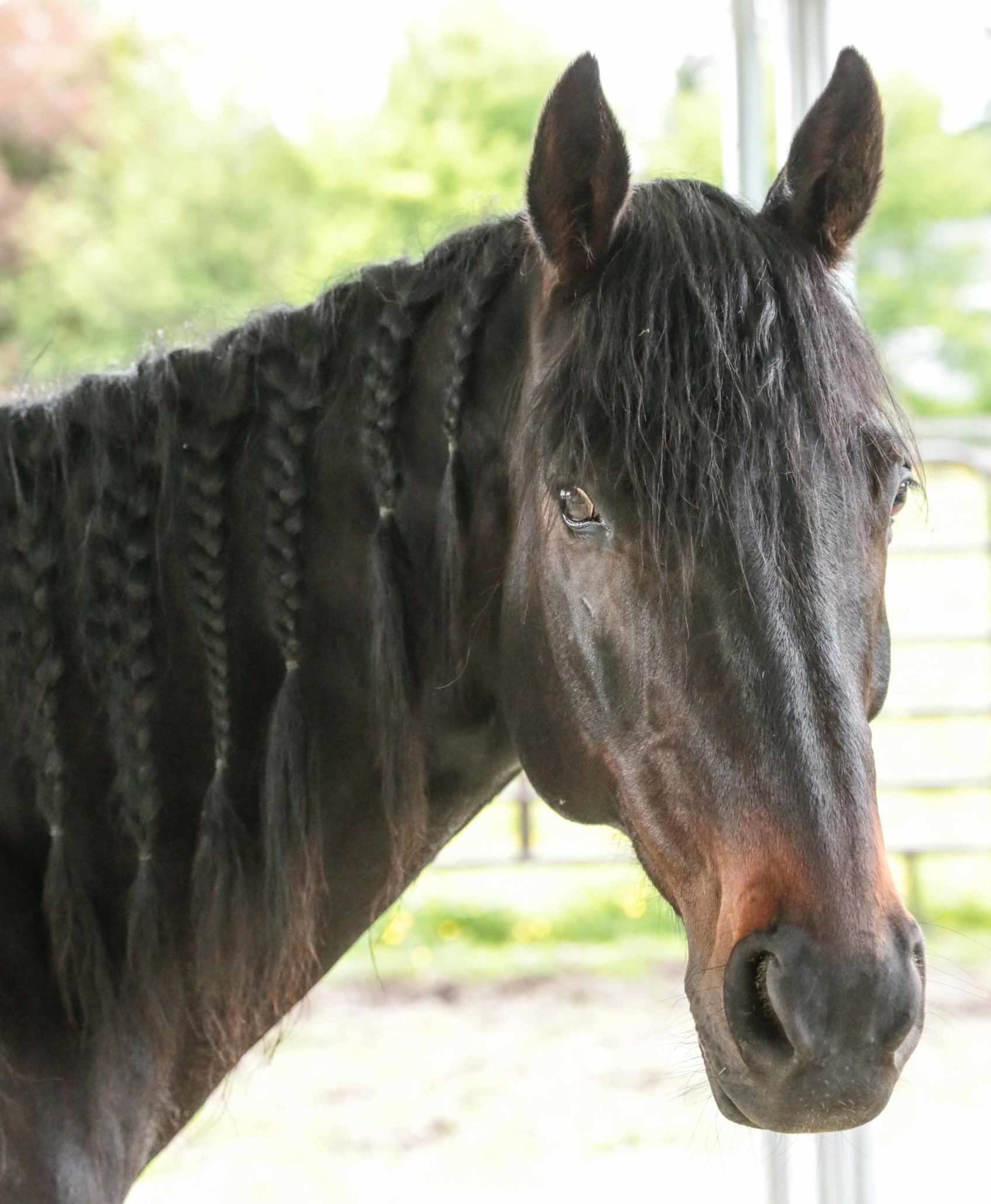After Cyrus returned from training, we began to notice a slight lameness under saddle. Dr. Lewis from Rainland came out a few weeks ago to do a lameness exam which was inconclusive. She told us that he would be a candidate for the lameness locator to help get to the root of the problem. We then scheduled an appointment for a lameness exam with the lameness locator, and Dr. Fleck came out last week to examine him.
Dr. Fleck watched Cyrus move and performed flexion tests. He appeared to be off on the right front during the initial portion of the exam, but nothing remarkable was found with flexions. Once the lameness locator was on him, the computer showed a right front and a right hind lameness. With this knowledge, Dr. Fleck first performed a nerve block to numb his right front leg from the fetlock down. We suspected that the problem might be in his foot, but there was no change in his lameness after the block so we were able to determine that was not the source of pain in that leg. Cyrus’ right hind leg was then blocked, again with no change. Dr. Fleck then attempted to block his right hock, but Cyrus had lost his patience at that point and it became too risky to continue. Dr Fleck said that he was fairly certain that the hock was not the problem anyhow, so we likely didn’t miss any answers by not blocking it.
The inconclusiveness of the lameness exam was disappointing. We were hoping to get to the bottom of his pain and do what we can to make him comfortable under saddle again. Instead, we are faced with a few options. The next step in diagnostics would be nuclear scintigraphy (bone scan). This would point to potential areas of inflammation in Cyrus’ body that we either couldn’t pinpoint in the lameness exam or that are not easy to find with other diagnostic methods due to the horse’s anatomy (like the spine and sacroiliac joints). A bone scan would give us information that we could then use to pursue further diagnostics or treatment methods in a certain area or areas. Unfortunately, this is not an option that we are able to jump to routinely because of the expense. Not only is the procedure itself expensive due to the materials and machinery involved, but on top of that you have the cost of whatever path you choose to take based on the results, whether that be further radiographs or ultrasounds, nerve blocks, joint injections, medications, etc.
Our second option would be to stop pursuing further diagnostics and make Cyrus a light trail horse. Dr. Fleck said that he could probably do easy trails with no problem at his current level of lameness. This would be a great option if it were not for the fact that he needs quite a bit of warm-up work on the ground and under saddle before he is mentally present enough to be reliable on the trails. He is not a “get on and go” type of horse.
Our third option, and the one we have chosen for the present time, is to retire him from riding altogether. An adopter down the road could choose to pursue further diagnostics and potentially get him back under saddle if he returned to soundness, but SAFE will likely be offering him as a companion with the understanding that he is currently lame. We can’t put more work into getting him ready as a riding horse if it’s causing him pain. He is very happy and sound in the pasture. We have decided to market him as a companion to potential adopters for now, while keeping our options open to continue to look for other solutions.
Cyrus is a strapping lad, full of character, good looks, and confidence. He has come such a long way from the emaciated, sad gelding that first came to us. He’ll likely be happy with whatever decision we make, as long as it means he still gets to experience his favorite thing of all time–his daily shoulder scratches from his human friends.


